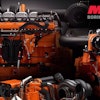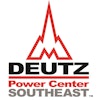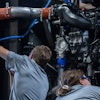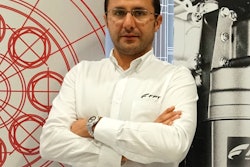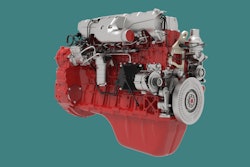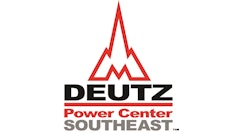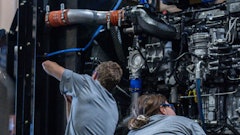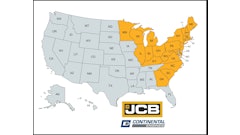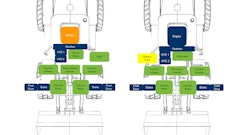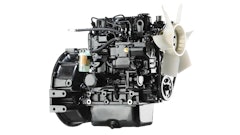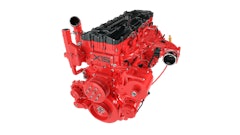
The Future of Diesel
Where do you see diesel playing a role in heavy-duty applications in the long-run?
John Deere Power Systems is committed to offering our customers the best power solutions for their specific application needs. To that end, we are continually examining new technologies and advancements in many areas, which may include alternative power sources. However, I believe the internal combustion engine as we know it today still has a long life ahead. The off-highway market is very demanding and requires a product that can withstand the more rugged demands of the industry. Due to these demands, off-highway engines need a fuel source that has enough energy density to meet the power needs of those applications.
With that being said, recent investments and advancements in aftertreatment technology have allowed for drastically improved engine emissions. Today’s diesel engines are designed for durability and performance while meeting environmental compliance regulations. John Deere has been on a journey to deliver engines that meet changing emissions standards that has allowed for scalable technology to be added to meet each subsequent emissions regulation. Because of this, John Deere is well-positioned to meet the power and durability needs of our customers while offering clean and environmentally-friendly engine options.
Any expectation for significant shifts in diesel engine technology or expectations in the near-term?
Weight and packaging of aftertreatment technologies will continue to be a primary focus. Optimizing the packaging and reducing weight are very important for many applications. From the technology side, John Deere has been working to leverage new catalyst technologies and emissions control calibrations to enable the downsizing of aftertreatment. Our next generation aftertreatment solutions deliver greater package flexibility and offer easier installation while providing up to a 20% reduction in size and up to 40% reduction in weight.
In the coming years, improvements in engine technology will come from optimizing current systems. As both an engine and vehicle manufacturer, John Deere is able to leverage its experience in the field to optimize its products on a systems level rather than by single components. This leads to enhanced performance, durability, and packaging.
Challenges & Opportunities
What new challenges have arisen that effect the way you design or manufacture your product? How you do business? How you go to market? How you differentiate yourself from the competition?
The continued evolution of differing global emissions standards requires a wide variety of aftertreatment configurations from manufacturers in order to meet varying market needs. John Deere has met this challenge by appropriately packaging technologies and leveraging those packages to apply to a wide variety of application and emissions needs. Because of its investments in scalable aftertreatment technology, John Deere is prepared to tackle the differing emissions markets.
There is a continued emphasis on how the end-user will ultimately benefit from the engine’s performance capabilities. John Deere is uniquely positioned to address customer needs and pursue the most useful product advancements. Again, John Deere has the advantage of designing engines and aftertreatment systems from both an engine and vehicle manufacturing standpoint, making its products distinct from the competition. Designing new technologies as part of a complete system, rather than as a standalone component, allows for a unique perspective that furthers product optimization.
Has the rate of technological advancement had any impact on business decisions, development, or product performance and client expectations?
The emergence of connected components have greatly impacted client expectations. The wide range of telematics data from John Deere vehicles has provided valuable insight into customer usage, cycles and profiles, which have allowed for further optimization of product requirements and specifications to better meet customer needs.
Because of improved product performance from these optimizations, customers have become accustomed to a higher threshold of operation. Customers expect reliable technology and to interface less with the product — to essentially close the hood and not think about it again. Therefore, a priority for John Deere is uptime, which is a primary driving factor more than anything else. The product has to work for the customer each and every day.
What is your company’s opportunity to impact the marketplace with a unique product, capability or offering?
An opportunity for John Deere to impact the marketplace is to continue to build on said customer expectations and deliver maximum vehicle uptime — whether through product support mechanisms or optimized product design.
When it comes to market-ready customer solutions, John Deere is ahead of the game. Its continued investment in powertrain products for its own machines, including extensive research, development and testing, allows smaller manufacturers and OEMs to benefit from the company’s expertise. For example, John Deere has more than 425 million hours of using its own emissions technology in a variety of applications in the field. Meaning that when other manufacturers incorporate John Deere powertrain solutions and technology on their machines, the system has already been optimized and proven for maximum performance and reliability.
